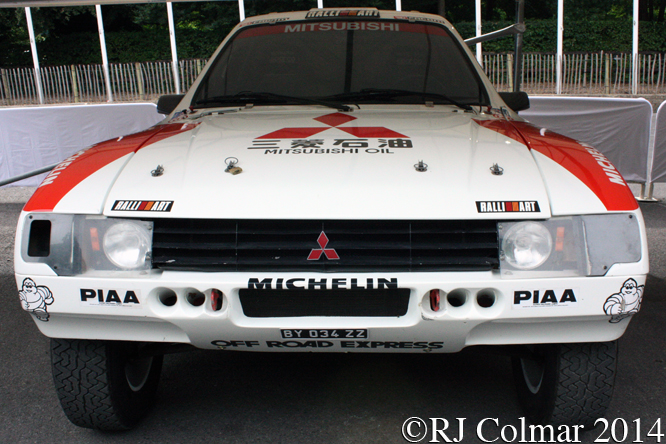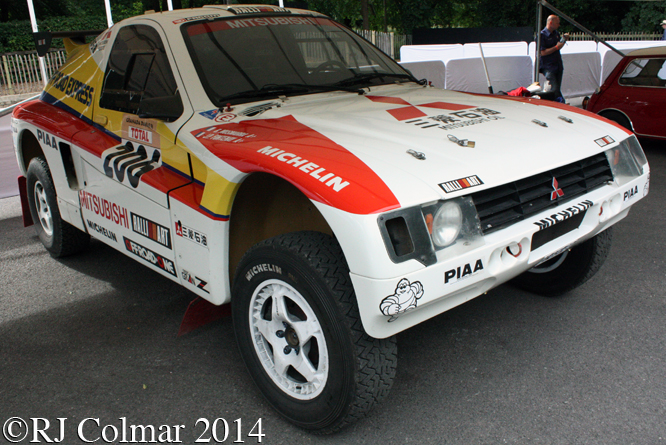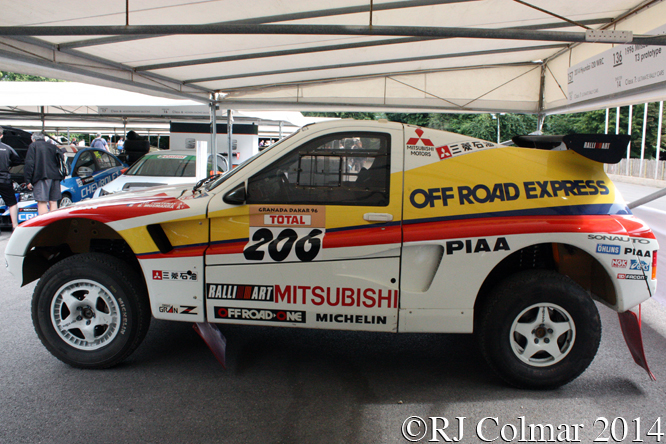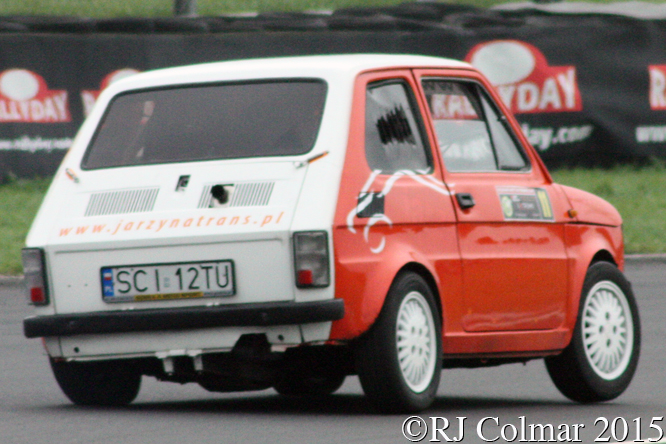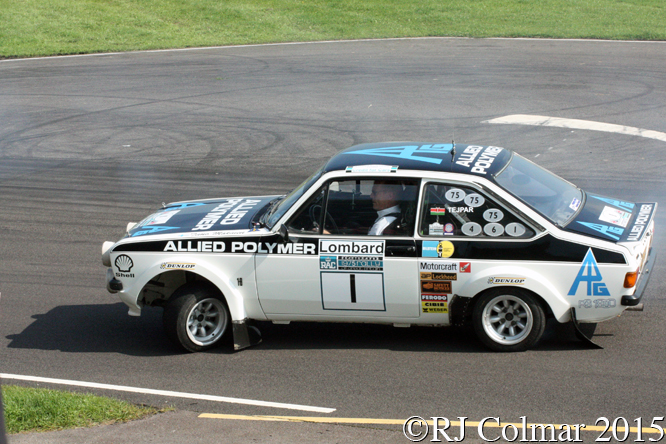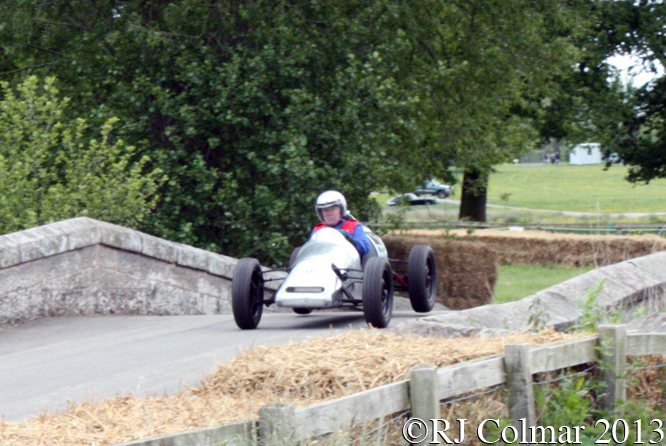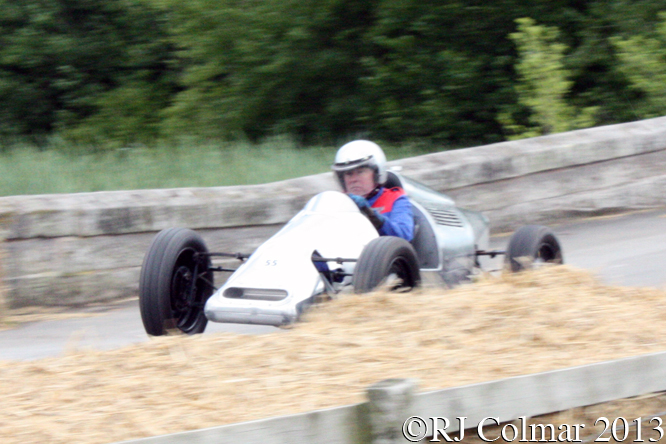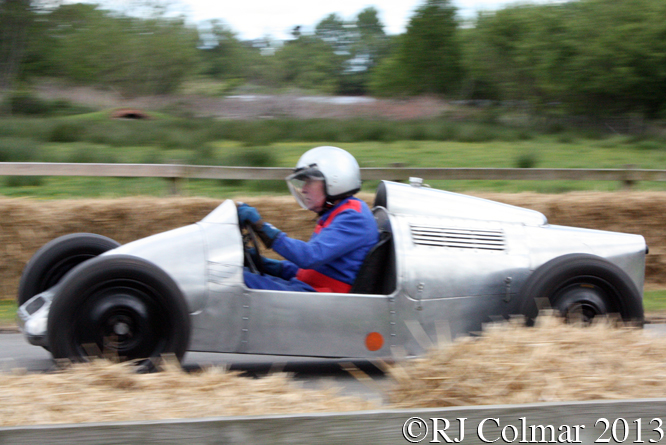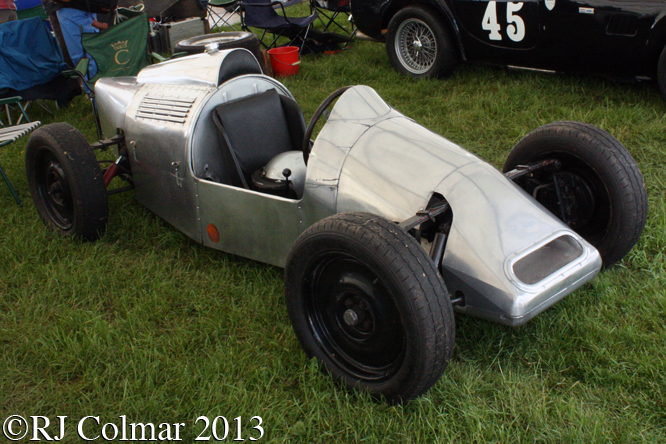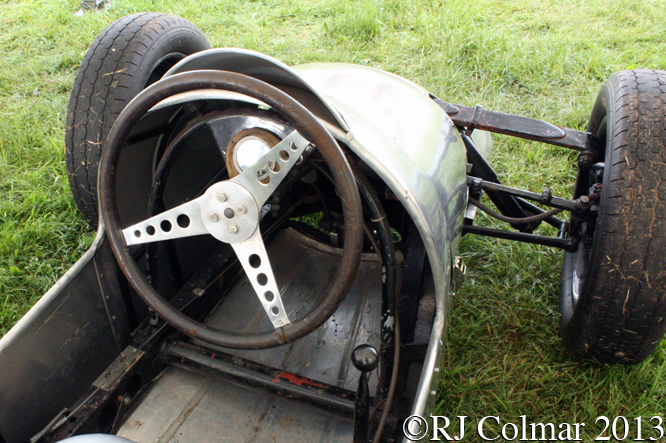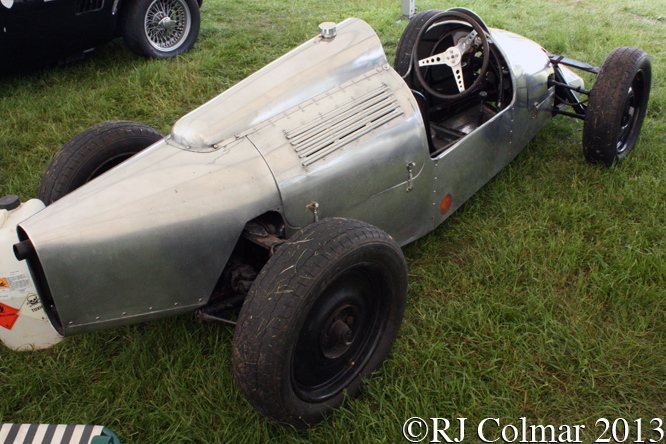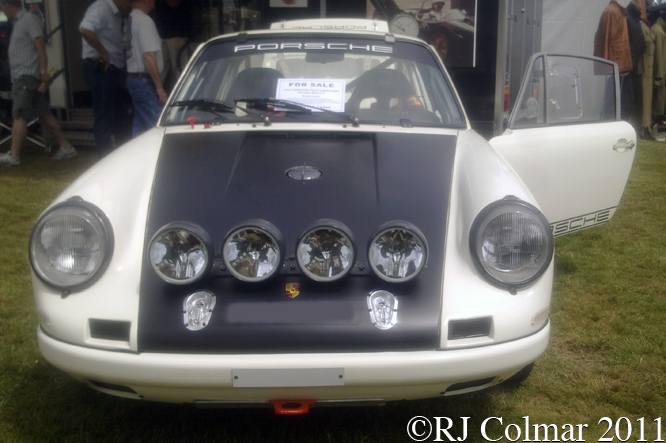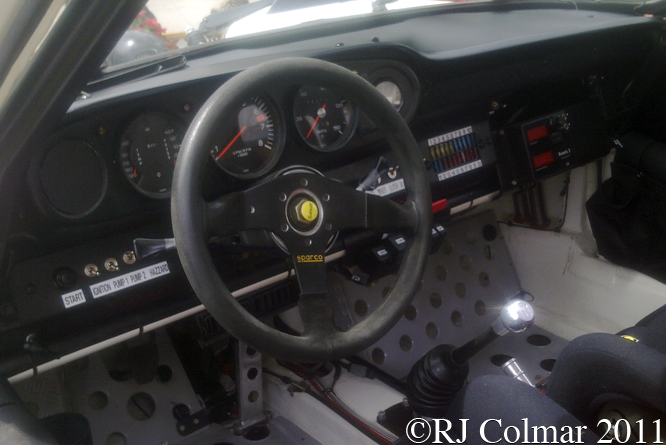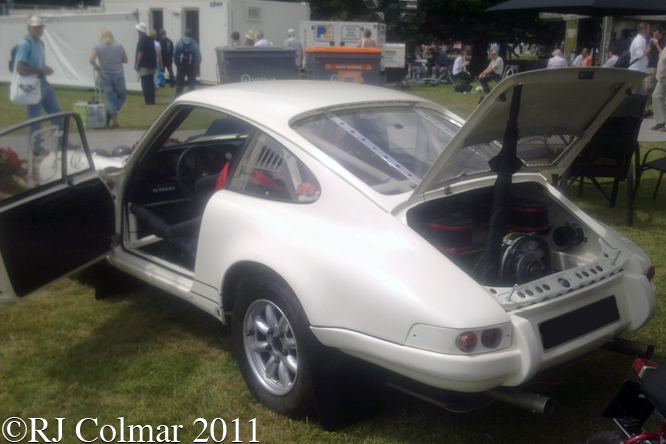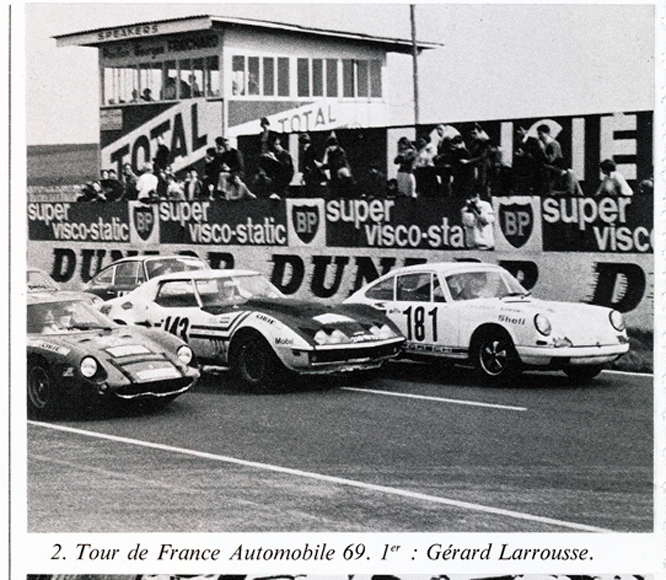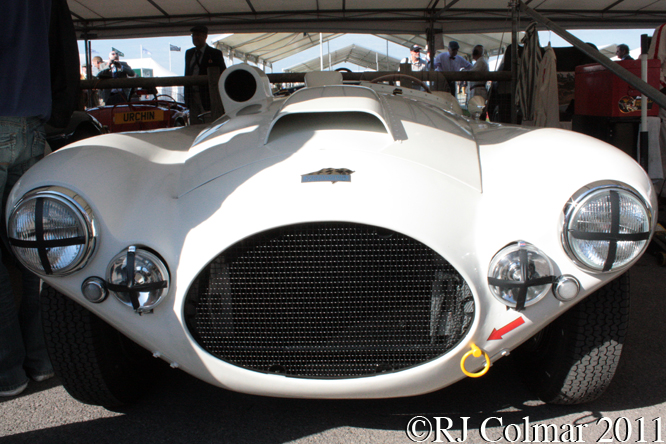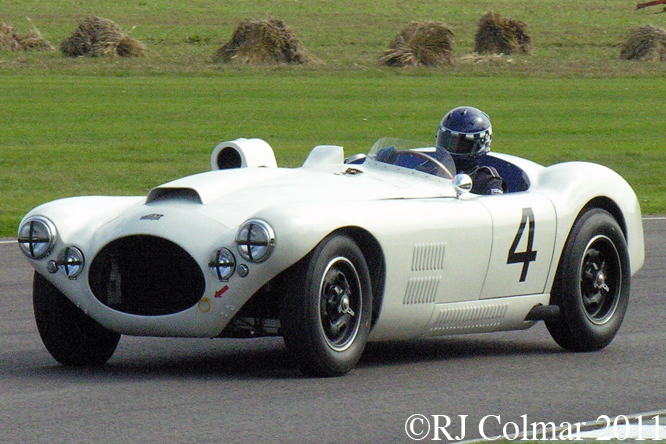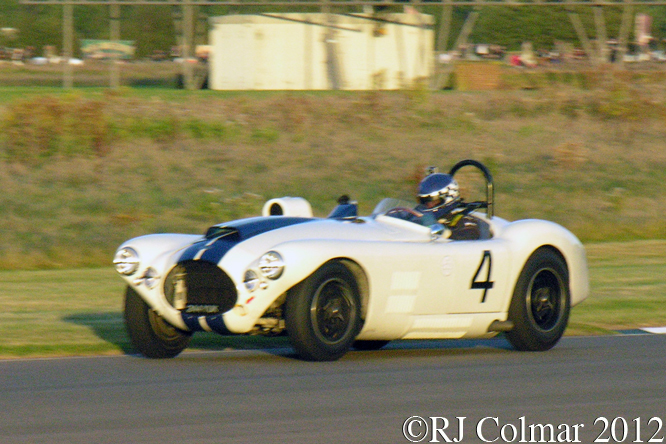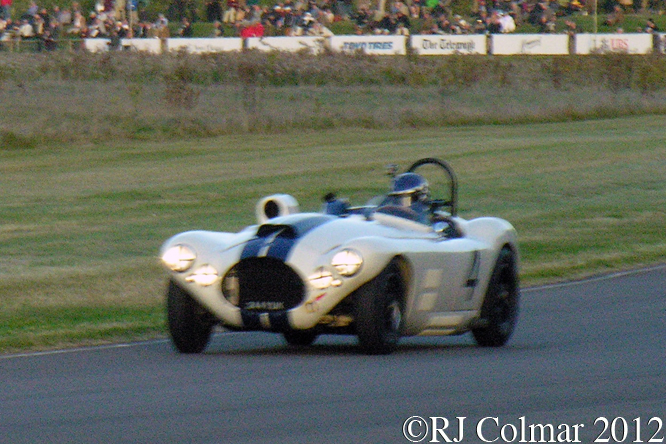In 1965 Ford’s open check book approach to winning the Le Mans 24 hours was in full swing when today’s car, first appeared in public at the Le Mans Test weekend where it was driven by John Whitmore and Richard Attwood to a 6th fastest time.
In all four steel chassis Ford GT Prototype Roadsters were built, #GT/108 and #GT/109 were sent straight from Ford Advanced Vehicles in Slough, England to Carrol Shelby for testing #GT/108 never raced and #GT/109 made a single race appearance, entered by Ford France at Le Mans in 1965 where Maurice Trintignant and Guy Ligier retired with gearbox problems. Additionally a fifth roadster was built with an aluminium chassis #GT110 this car was developed by Bruce McLaren and Howden Ganely and is known as the GT X1 which was further differentiated from it’s siblings by the use of a Ford Galaxie derived 7 litre / 427 cui motor and a Hewland gearbox all of which resulted in a car 1000 lbs lighter than the original Ford GT Prototypes.
#GT/111 and #GT112 were the last of 12 Ford GT prototypes to be built in Slough and the pair took part in just three races entered by Ford Advanced Vehicles run by John Wyer. Wyer had been team manager at Aston Martin when Roy Salvadori and Carrol Shelby drove the Aston Martin DBR1 to victory in Le Mans in 1959.
Carrol Shelby now running his own race shop and contracted to enter some of Ford’s GT cars persuaded Ford to run the heavier more powerful iron block 4.7 litre 289 cui V8 from the Cobra racing programme in place of the original GT Spec 4.2 litre / 256 cui Windsor derived motor, apart from X1 all the GT Roadsters appear to have been fitted with Shelby’s Cobra 289 cui V8’s.

#GT/111 was painted white and fitted with wire wheels for it’s first public appearance was at Le Mans, a month later #GT/111 was painted a curious shade of Green, a gesture to the chassis and entrants British heritage, it was also fitted with Shelby magnesium wheels for the Targa Florio.
John, now Sir John, Whitmore and Bob Bondurant were chosen as Ford’s sole representatives in #GT111 which was to compete against three works Ferrari 275P/2’s fitted with the latest 3.3 litre / 201 cui 4 cam V12 motors.
A couple of months ago I went to a talk by Sir John organised by the Club Lotus Avon, in which he related how he was speeding along when the left front wheel came adrift forcing him to stop, Sir John replaced the wheel with the mandatory spare and secured it with the original hub nut which had been returned to him by a policeman and continued on his way, contemporary reports tell how the loose wheel took down some overhead railway power lines !
On lap 8 of the 10 lap race, each lap being run over a 44 mile 72 km closed (narrow) road circuit, Bob Bondurant crashed after sliding on gravel into a wall and then bouncing into a water trough which tore off a front wheel and it’s suspension. The 1965 Targa Florio was won in 7 hours and 1 min by local hero Nino Vacarrela and Lorenzo Bandini driving a Ferrari 275P/2.
The damage to #GT/111 was never repaired and a similarly painted #GT112 appeared in it’s only works entered appearance for the 1000 km race at the Nurburgring driven by Attwood and Whitmore who retired with an engine mounting failure having started from 6th on the grid.
Of all the GT Roadsters the aluminium light weight #GT110 X1 had the longest works supported career having been entered in 4 races by Bruce McLaren for Chris Amon in 1965 who scored a best 5th place finish in the 200 mile race at Riverside. The following season X1 appeared with original GT Roadster type bodywork in the Sebring 12 hours entered by Shelby American for Ken Miles and Lloyd Ruby who won the race from 5th on the grid. X1 was subsequently ordered destroyed by customs officials.
At he end of 1965 Ford moved it’s entire GT racing developemnt programme out of Ford Advanced Vehicles in Slough to Shelby and Kar Kraft in the United States, #GT/112 was sold to Peter Sutcliffe who raced the car in 1966 and scored a couple of season high second place finishes one in South Africa and the other in France during the 1967 season. For 1968 Bob Vincent acquired the car and appears to have won second time out in an open class race run at Aintree.
The damaged #GT/111 was scheduled to be scrapped, however the scrap yard saved the chassis which was acquired by the present owner, in 2006, after Ford GT expert Ronnie Spain verified #GT/111’s identity. The car seen in this photo driven by Andrew Newall at the Goodwood revival a couple of years ago, has been restored by Glescoe Motorsport and is to appear at RM auctions in May 2014.
Thanks for joining me on this “Three Wheels On My Wagon” edition of “Gettin’ a li’l psycho on tyres”, I hope you will join me again for Ferrari Friday tomorrow. Don’t forget to come back now !
